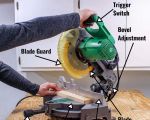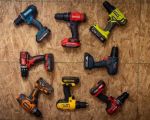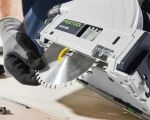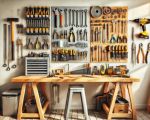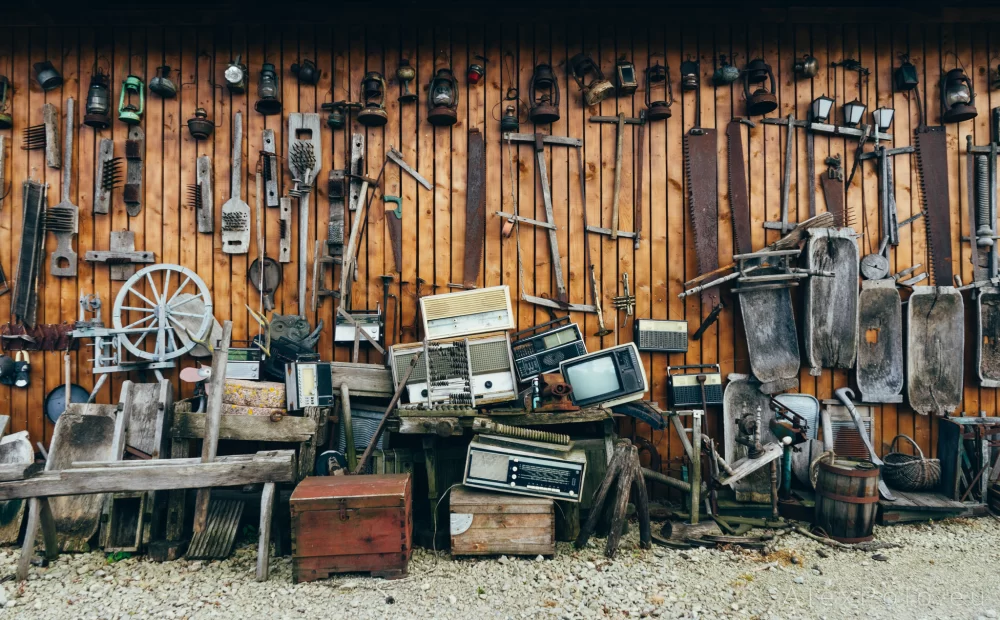
May 04, 2025
Introduction: Why Proper Power Tool Maintenance is Essential
As someone who regularly uses power tools for various projects, I can confidently say that proper maintenance is the key to ensuring your tools perform at their best for years. Whether you are a professional contractor or a DIY enthusiast, power tools are an essential part of your toolkit. However, like any machinery, they require care and attention to maintain optimal performance.
In this article, I’ll guide you through the best practices to properly maintain your power tools, including tips for cleaning, lubrication, storage, and more. Whether you’re dealing with drills, saws, or sanders, these practices will keep your tools running smoothly and help avoid costly repairs or replacements.
1. Regular Cleaning: A Simple Yet Effective Maintenance Step
The first and most straightforward maintenance step for any power tool is regular cleaning. Over time, dust, dirt, and debris can accumulate in the moving parts of your tools, which can cause wear and tear. Cleaning your power tools after each use will prevent this build-up and improve performance.
- Use Compressed Air: After each use, blow out dust and debris from the motor, gears, and vents using compressed air. This is especially important for tools like saws and drills where debris can accumulate in small spaces.
- Wipe Down Surfaces: Use a damp cloth to wipe off any dirt or grease from the tool’s surface. For tougher dirt, a mild cleaning solution will help remove it without damaging the finish.
Cleaning not only ensures your tools work properly but also helps you spot early signs of wear or damage, making it easier to address potential issues before they become serious.
2. Lubrication: Keeping the Moving Parts Smooth
Just like a car engine needs oil, your power tools require proper lubrication to keep them running smoothly. Lubricating the moving parts, such as the motor, gears, and bearings, can reduce friction and prevent overheating.
- Use the Right Lubricant: Always use the manufacturer-recommended lubricant for your tools. The wrong lubricant can cause more harm than good, attracting dirt and causing the tool to wear down faster.
- Apply Lubricant Periodically: Depending on the frequency of use, lubricate your tools every few months or after a heavy use session. Don’t overdo it—just a small amount on the necessary parts is enough.
Proper lubrication is crucial to prolonging the life of your tools and ensuring they continue to perform at their best.
3. Regular Inspection: Spotting Problems Early
Regular inspection of your power tools is essential for catching issues before they escalate into costly repairs. During your inspection, look for signs of damage, wear, or misalignment that could affect performance or safety.
- Check for Loose Parts: Ensure all screws, nuts, and bolts are tightly fastened. Loose parts can cause vibrations that lead to more serious damage over time.
- Examine Cords and Power Supply: For corded tools, check the cord for any cuts or frays. For battery-operated tools, inspect the battery for signs of wear or corrosion.
- Look for Worn-Out Brushes: Power tools with brushes (such as drills) need periodic checks to ensure the brushes aren’t worn down too much. Replacing worn-out brushes is crucial to maintaining tool performance.
Identifying potential problems early can save you time, money, and hassle by preventing unexpected breakdowns.
4. Proper Storage: Protecting Tools from Damage
How you store your power tools plays a significant role in their longevity. Storing them improperly can lead to rust, battery drainage, or other issues that reduce their effectiveness.
- Use Tool Boxes or Cabinets: Store tools in a secure, dry place. A tool box or a cabinet will help prevent them from being exposed to dust, moisture, or physical damage.
- Store Tools Upright: For tools with a cord or hose, hang them up or store them upright to avoid tangles and pressure on the cables.
- Remove Batteries for Storage: For battery-powered tools, remove the batteries before storing. This helps prevent battery drainage and corrosion.
Proper storage helps preserve the tools’ functionality and ensures they’re ready to use when you need them.
5. Replacing Worn-Out Parts: Maintaining Optimal Performance
Over time, certain parts of your power tools will wear out and need replacing. Identifying and replacing these parts is essential for keeping your tools running smoothly and avoiding further damage.
- Replace Blades, Bits, and Sandpapers: Cutting tools like saws and drills need sharp blades and bits to work efficiently. Regularly check for dullness and replace them as necessary.
- Check the Motor Brushes: As mentioned earlier, the brushes in power tools can wear down with use. Replacing motor brushes before they become too worn can extend the tool’s life.
Keeping track of which parts need to be replaced regularly will help ensure that your power tools are always in top condition and reduce the risk of sudden failures.
6. Safety Measures: Protecting Your Tools and Yourself
Maintaining your power tools is not only about keeping them in good condition but also ensuring they operate safely. Always follow safety guidelines to prevent injuries and damage.
- Always Follow Manufacturer Instructions: Each tool comes with specific maintenance and safety instructions. Always adhere to these guidelines to avoid causing unnecessary harm to the tool or yourself.
- Wear Protective Gear: Always wear appropriate safety equipment such as goggles, gloves, and ear protection when using power tools.
- Unplug Tools When Not in Use: This prevents accidents and ensures the tool isn’t accidentally activated when you’re working on it or storing it.
By following safety measures, you not only protect your tools but also ensure that you remain safe while using them.
Conclusion: Keep Your Tools in Great Shape for Long-Term Use
Maintaining your power tools may seem like a tedious task, but it’s one that pays off in the long run. Regular cleaning, lubrication, inspections, and proper storage can ensure that your tools continue to perform at their best for years. By replacing worn-out parts and following safety measures, you can also prevent unexpected repairs and ensure the longevity of your tools.
Remember, power tools are an investment, and like any investment, they need care and attention to continue delivering value. Start by implementing the tips shared in this article, and you’ll notice your tools working better and lasting longer. Whether you’re a seasoned professional or a weekend DIY enthusiast, taking the time to maintain your power tools will always pay off.

